What is Combo Welding, and How Does It Work? 2024 Guide
Last Updated on
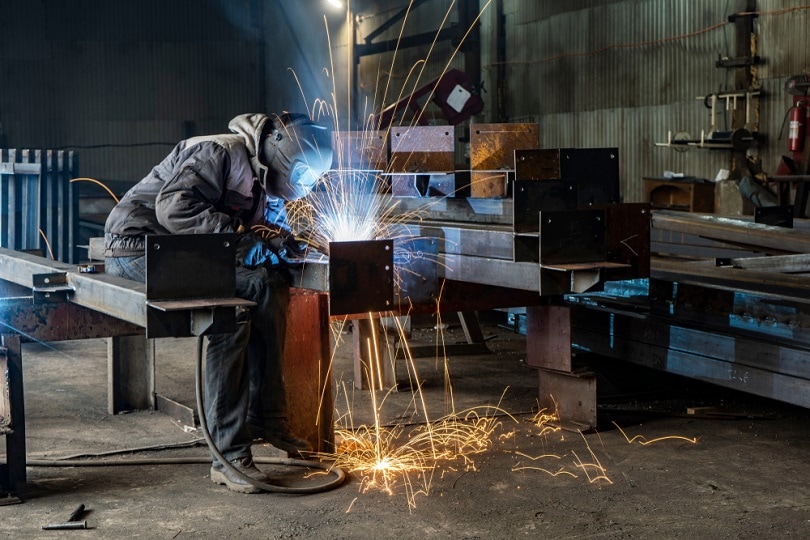
You might be thinking, “Combo welding, that’s above my paygrade.” It might seem complicated. You might only be familiar with, at most, a couple of different welding processes. You might only know how to MIG weld. So what process is combo welding? Well, the terms ‘combo welding’ and ‘combo welder’ get tossed around leading one to believe that this is a specific type of welding process. It is not.
Combo welding is the usage of two or more processes in the same project. As applied to welders themselves, it technically means that they are competent in two or more processes. They may or may not be perfectly proficient in each process, but they have some experience. Ideally, the welder will hold certifications in all the welding processes for which he is claiming the title ‘combo welder,’ but in reality, this is not usually the case.
This article will give a brief overview of how the four most popular welding processes are used in combination with each other, as well as a brief overview of these same processes.
How Does It Work?
Not all welding processes are created equally. Not that one is better than another. It is simply the fact that they have different applications. Some are more fit for structural steel because they are more apt to handle something heavy-duty. Some are geared toward lighter gauge materials. Some are cleaner and result in much more aesthetically pleasing welds.
But there are cases where multiple welding processes are either needed, increase productivity, or are simply easier. The processes that are used together can depend upon the power source. MIG and FCAW, both of which use essentially the same equipment, run on a constant voltage power source from a welder inverter. SMAW (Stick) and TIG both run off a constant current welder transformer.
Some thin gauge surfaces cannot bear the heat of Stick or even FCAW. The converse is also true. Some thick steel plate that is beveled would be nearly impossible to weld with a TIG torch. It would take too long to bridge the gap and would hinder productivity. Even if it were possible, it might be difficult.
What Are the Four Types of Welding?
There are more than four types. However, these four are by far the most common.
Shielded Metal Arc Welding (Stick)
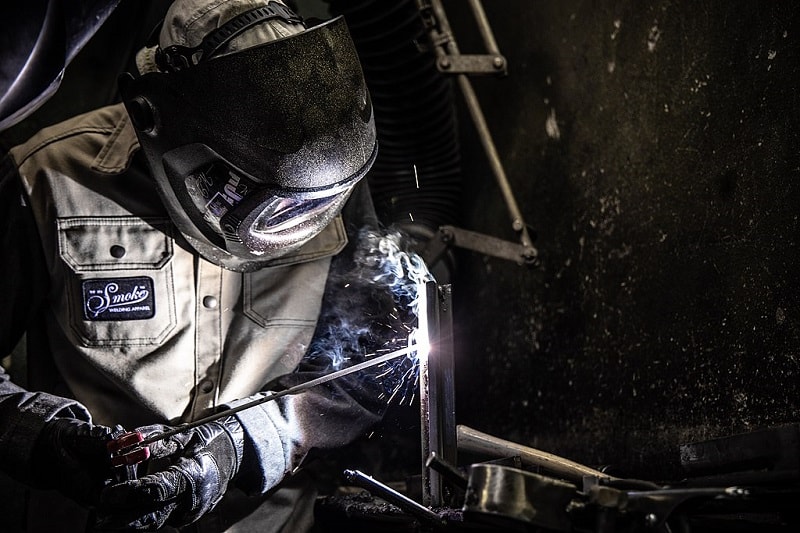
SMAW is a process that we commonly know as stick or arc welding. The power source gives a constant current and the parameters are changed by adjusting the amperage on the welding machine. The voltage changes depending on the arc length between the workpiece and the electrode.
The workpiece has a ground clamp attached to it. This can either be positive or negative depending on the polarity. Stick welding also can run with an alternating current. That is the current changes directions many times per second. The other end of the welding current will be the electrode. Stick welding electrodes are rods coated in a flux. The rods are inserted into the electrode holder (stinger). The arc is initiated at the workpiece through contact of the electrode with the metal.
After the arc is initiated, the electrical energy from it begins to melt the molten base metal and the filler metal of the electrode simultaneously. This means that the flux is also burning up as well and gassing off. The gas from the flux pushes away atmospheric gases thereby protecting the molten weld pool from contaminants. The part of the flux that is deposited into the weld results in a slag that floats to the top of the weld. This is then chipped off afterward.
Metal Inert Gas Welding (MIG)
MIG or Gas Metal Arc Welding (GMAW) is a semiautomatic welding process that uses a welder inverter power source. The current is constant voltage, meaning that the voltage is set on the machine. The amperage depends on a combination of wire feed speed, filler metal deposition rate, arc length, and stick-out or CTWD (contact tip to work distance).
The electrode for this process runs on a wire feed system. A welding gun is used which, when the trigger is pulled, will feed the wire through the welding lead (‘whip’). It runs through a conduit liner inside the lead. The wire runs up against the inside surface of the liner causing good electrical conductivity. It exits the welding contact tip, which is key for initiating the arc.
Unlike a constant current welding process like SMAW, the electrode contact at the workpiece does not in itself initiate the arc. Since it runs on constant voltage, the arc has to be initiated with the welding gun. When the arc begins, the filler wire enters the molten weld pool and adds to the base metal. MIG solid wire does not have a slag. Instead, the weld protection is achieved by using an inert gas, usually, a combination of carbon dioxide and argon diffused from a gas diffuser in the welding gun.
Flux-Cored Arc Welding (FCAW)
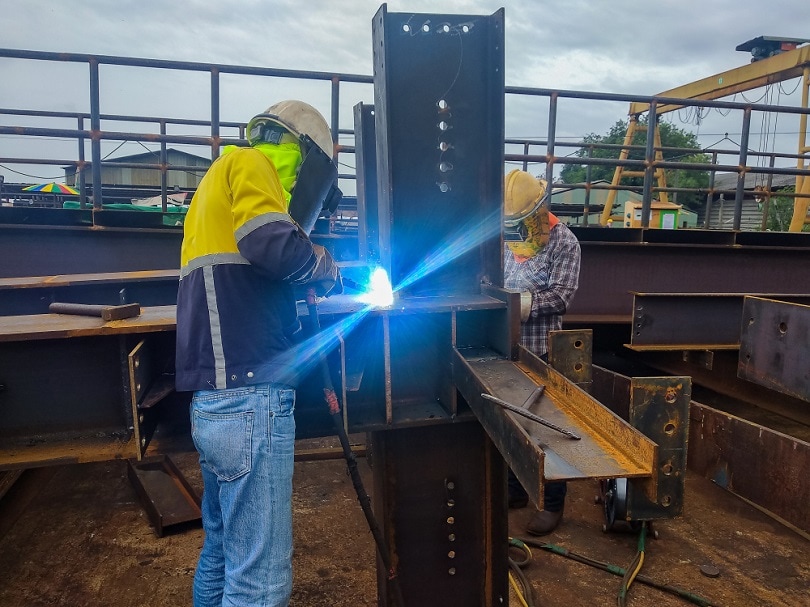
This process uses the same equipment as the MIG process. It is semiautomatic. The primary difference is the wire itself. Instead of using a solid wire, the wire for FCAW has- you guessed it- flux in the core. This flux works much in the same way as Stick welding. It burns up, protecting the weld, and will result in slag that needs to be chipped off.
There are two variations of FCAW. One is called self-shielded FCAW. This can be used indoors or outdoors. The flux in and of itself is sufficient to protect the weld from contaminants. Then there is dual shield FCAW. This process utilizes a combination of the flux as well as an additional shielding gas (either pure carbon dioxide or a mix of carbon dioxide and argon).
Tungsten Inert Gas Welding (TIG)
TIG or Gas Tungsten Arc Welding (GTAW) is a manual arc welding process that utilizes the same constant current power source as SMAW. This means that the amperage is adjusted on the machine. However, the equipment that is used is very different from SMAW.
The electrode, meaning the non-workpiece side of the welding current, is inserted into a TIG torch. This is usually tungsten or a related alloy. Grinding the tip of the piece of tungsten to properly achieve a surface that will conduct a good arc, the welder will initiate the arc, either through scratch-start (much like SMAW) or through initiating it with a foot pedal or trigger. Argon begins flowing beforehand and continues flowing after the weld is finished (pre-flow and post-flow respectively). Whereas with SMAW, the filler metal functions as the electrode, TIG electrodes are not consumable. Instead, the filler metals used are filler rods that are ‘dipped’ into the molten weld pool.
Where is it Used?
The different combinations of welding applications are limitless. Let’s take a look at a few important combinations.
Pipe Welding
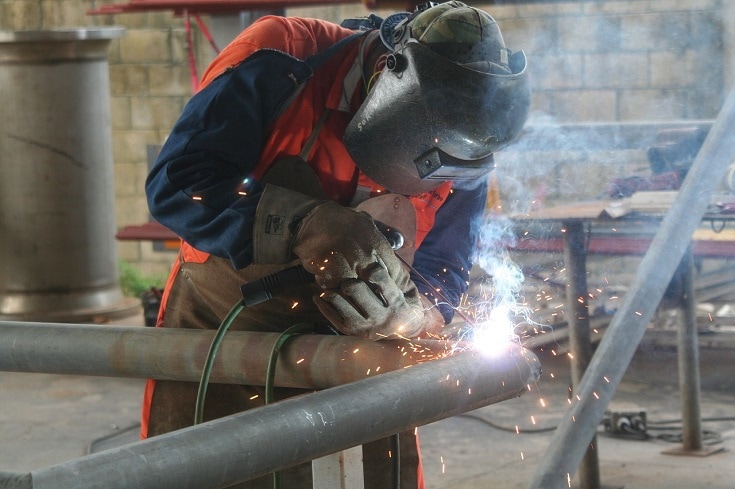
If you have to weld two pieces of pipe together in all positions, TIG due to its low deposition rate and ability to start and stop without breaking continuity will be ideal for welding the root. The root is probably the most critical pass of a pipe joint weld. If you don’t get this right, then the whole joint can fail. However, welding the whole joint with a TIG welder can take some time. By convention, the root is welded TIG, but the fill and cap are welded with SMAW using a 7018 electrode. Since SMAW and TIG both use a constant current, there is usually no need to change the power source.
Fit-up and Weld
It may be the case that something can be fit up using tack welds on a fabrication table but then needs to be welded in place in the field. In this case, MIG or FCAW are favorites due to their ability to ‘zap’ two pieces of metal together with one hand, almost without thinking (or looking sometimes).
Gap Bridging
This is almost treated the same way as filling a root pass. MIG and FCAW can work great to bridge a large gap before welding fully with SMAW. This is possible provided that the MIG filler metal is permitted in the joint, to begin with.
- Versatility
- Ability to come up with creative solutions
- Can save time and money
- Requires more planning
- More skill needed
- Uses more equipment that you might not have on hand
- See also: What are Taps on a Welding Transformer?
Frequently Asked Questions (FAQs)
What is a Combo Welder?
Well, we should have some idea by now, right? The truth, as some old-timers will say, that there used to be a distinction in the spelling between weldor (the operator) vs. welder (the welding machine).
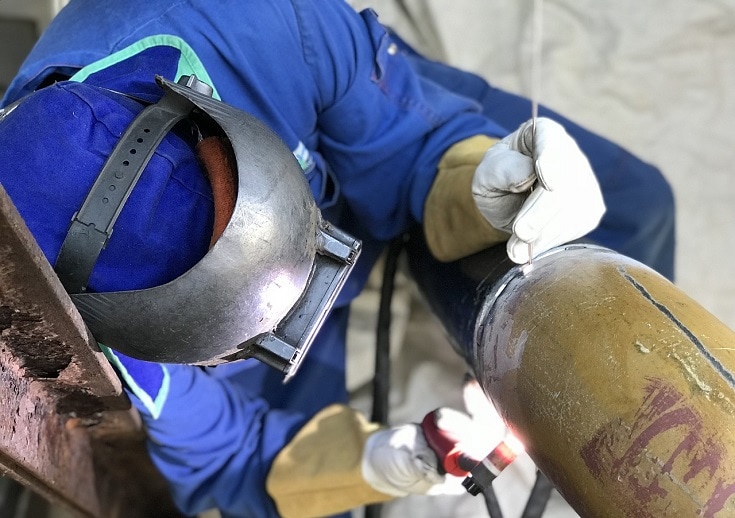
But the confusion arises due to the fact that ‘welding machine’ and ‘welder’ alike are often used to refer to the equipment. So, a combo welder is either someone who welds using different welding processes or a welding machine that can utilize any of the four welding processes mentioned above.
How Much Do Combo Welders Make?
That all depends on what the industry and location are. If you just have some passing experience in these processes but aren’t proficient in any of them, don’t expect to make more than someone in your job market who is proficient in only one. However, if you are proficient and certified in all of these processes, there are job opportunities that can pay in the six-figure range.
What Type of Welding is Most in Demand?
MIG welding jobs are most aplenty. That being said, some of the most coveted skills in the trades are TIG welding and Stick welding for pipe. This is because they are significantly more difficult to learn than pulling a trigger on a MIG gun in a shop.
Conclusion
A good combo welder is hard to come by. It takes creativity, versatility, and often money out of their own pockets for tools and certifications. Figuring out which processes to use for caution and which to use for productivity takes the right balance. And the four processes mentioned above are by no means an exhaustive list. Other processes include Oxy-acetylene welding, submerged-arc welding, and plasma arc welding.
Featured Image: Suvorov_Alex, Shutterstock
